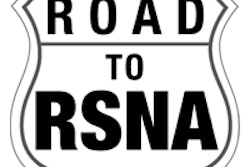Monday, November 30 | 11:20 a.m.-11:30 a.m. | RC201-11 | Room S406B
Major changes have come to CT lung cancer screening in the past two years, and the results of a survey of major academic centers highlights both modest increases in screening volumes and a move away from self-pay screening.The changes began in 2013 with approval of the CT exam by the U.S. Preventive Services Task Force (USPSTF). Then, late last year and early this year brought approval by the U.S. Centers for Medicare and Medicaid Services (CMS), making screening of high-risk individuals a reimbursed service for the first time.
In light of these rapid changes, "we were curious to see how screening practices had changed at leading academic medical centers during this time," study author Dr. Phillip Boiselle, from Brigham and Women's Hospital, told AuntMinnie.com.
In March, the team surveyed thoracic radiologists at leading academic centers nationwide, including top hospitals, cancer centers, and pulmonary medicine centers. Radiologists who said they currently offer CT lung cancer screening were asked additional questions about their programs, ranging from patient selection details to nodule management. The results were compared with surveys from 2014 and 2013. In all, 17 of the 18 centers that responded have a screening program.
Screening practices rapidly evolved from 2013 to 2015 in several ways, the group found:
- Increased mix of payor-reimbursed studies with fewer self-pay exams
- Modestly higher patient volumes
- Revised solid nodule threshold from 4 mm to 6 mm or larger
- Broad adoption of the Lung-RADS reporting system
"However, the surprising lack of increase in high-volume programs during this time period suggests slow adoption of lung cancer screening by patients and providers, despite USPSTF endorsement and CMS coverage," Boiselle said.




















